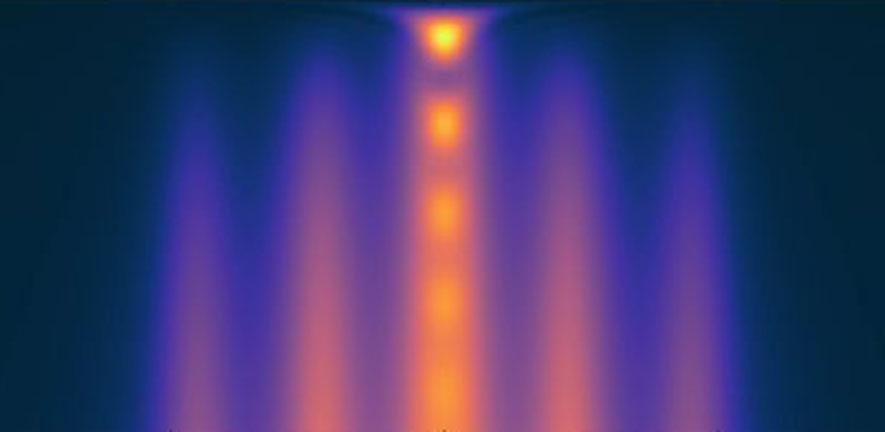22 Feb 2019
Quantum dots are crystals made up of thousands of atoms, and each of these atoms interacts magnetically with the trapped electron. If left alone to its own devices, this interaction of the electron with the nuclear spins, limits the usefulness of the electron as a quantum bit - a qubit.
Led by Professor Mete Atatüre from Cambridge's Cavendish Laboratory, the researchers are exploiting the laws of quantum physics and optics to investigate computing, sensing or communication applications.
“Quantum dots offer an ideal interface, as mediated by light, to a system where the dynamics of individual interacting spins could be controlled and exploited,” said Atatüre, who is a Fellow of St John's College. “Because the nuclei randomly ‘steal’ information from the electron they have traditionally been an annoyance, but we have shown we can harness them as a resource.”
The Cambridge team found a way to exploit the interaction between the electron and the thousands of nuclei using lasers to ‘cool’ the nuclei to less than 1 milliKelvin, or a thousandth of a degree above the absolute zero temperature. They then showed they can control and manipulate the thousands of nuclei as if they form a single body in unison, like a second qubit. This proves the nuclei in the quantum dot can exchange information with the electron qubit and can be used to store quantum information as a memory device. The results are reported in the journal Science.
Quantum computing aims to harness fundamental concepts of quantum physics, such as entanglement and superposition principle, to outperform current approaches to computing and could revolutionise technology, business and research. Just like classical computers, quantum computers need a processor, memory, and a bus to transport the information backwards and forwards. The processor is a qubit which can be an electron trapped in a quantum dot, the bus is a single photon that these quantum dots generate and are ideal for exchanging information. But the missing link for quantum dots is quantum memory.
Atatüre said: “Instead of talking to individual nuclear spins, we worked on accessing collective spin waves by lasers. This is like a stadium where you don’t need to worry about who raises their hands in the Mexican wave going round, as long as there is one collective wave because they all dance in unison.
“We then went on to show that these spin waves have quantum coherence. This was the missing piece of the jigsaw and we now have everything needed to build a dedicated quantum memory for every qubit.”
In quantum technologies, the photon, the qubit and the memory need to interact with each other in a controlled way. This is mostly realised by interfacing different physical systems to form a single hybrid unit which can be inefficient. The researchers have been able to show that in quantum dots, the memory element is automatically there with every single qubit.
Dr Dorian Gangloff, one of the first authors of the paper and a Fellow at St John’s, said the discovery will renew interest in these types of semiconductor quantum dots. Dr Gangloff explained: “This is a Holy Grail breakthrough for quantum dot research – both for quantum memory and fundamental research; we now have the tools to study dynamics of complex systems in the spirit of quantum simulation.”
The long term opportunities of this work could be seen in the field of quantum computing. Last month, IBM launched the world’s first commercial quantum computer, and the Chief Executive of Microsoft has said quantum computing has the potential to ‘radically reshape the world’.
Gangloff said: “The impact of the qubit could be half a century away but the power of disruptive technology is that it is hard to conceive of the problems we might open up – you can try to think of it as known unknowns but at some point you get into new territory. We don’t yet know the kind of problems it will help to solve which is very exciting.”
Reference:
D. A. Gangloff et al. 'Quantum interface of an electron and a nuclear ensemble.' Science (2019). DOI: 10.1126/science.aaw2906
Originally published on the St John's College website.
This work is licensed under an attribution, noncommercial, share-alike Creative Commons Licence. The original article can be read at
www.cam.ac.uk/research
https://www.cam.ac.uk/research/news/physicists-get-thousands-of-semiconductor-nuclei-to-do-quantum-dances-in-unison













